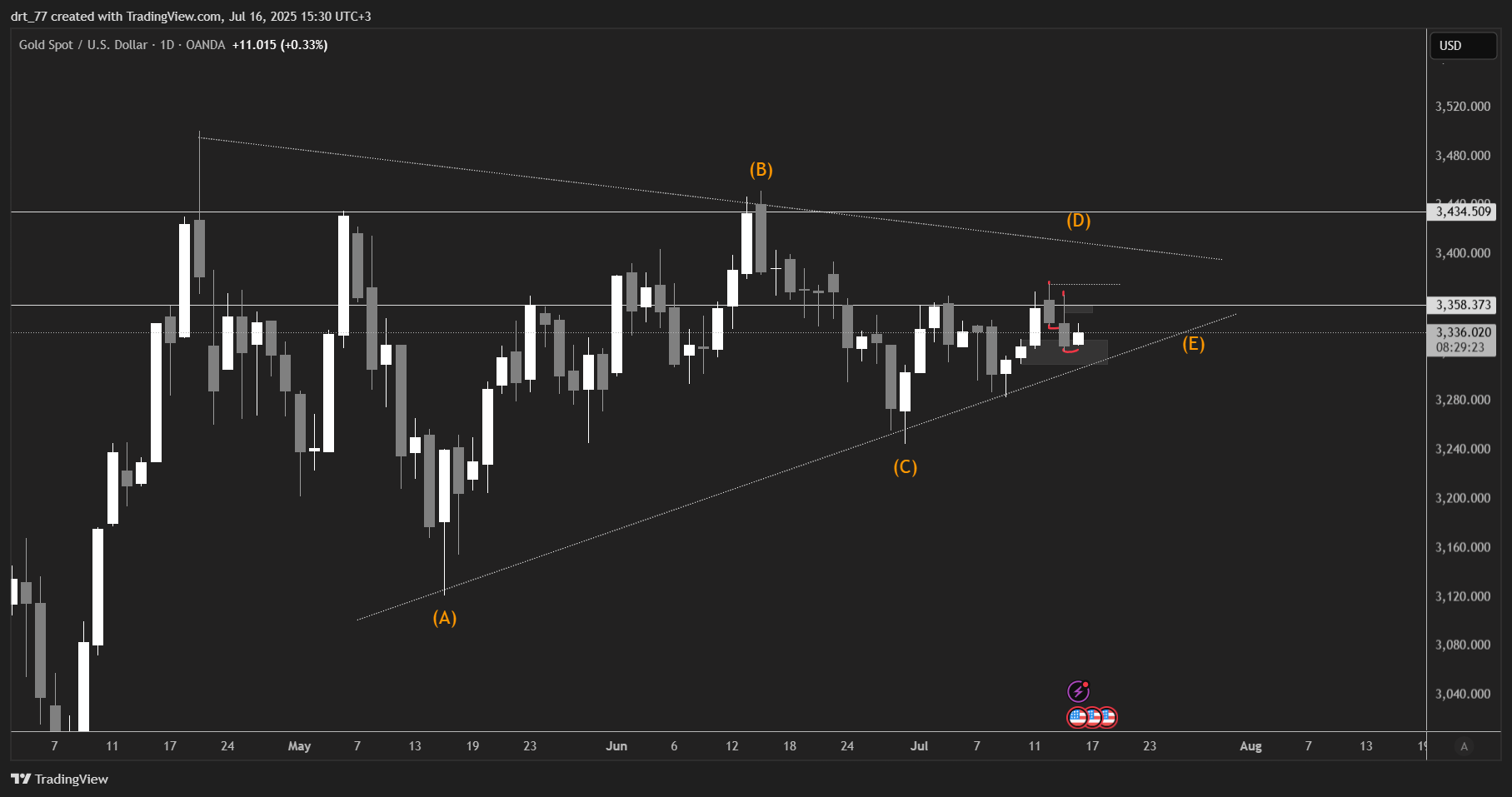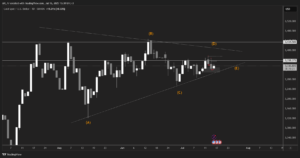Profit-taking pressures gold, important data may push the price to this level
Gold prices declined during Tuesday’s trading as profit-taking intensified after gold reached its highest level in over a week. Meanwhile, market participants are awaiting key U.S. inflation data, which may provide further insights into the Federal Reserve’s next monetary policy decision.
“Gold had a strong start this week despite a moderate pullback due to some minor profit-taking.”
Prices are expected to benefit if U.S. inflation data comes in lower than expected, which could ignite hopes for a significant interest rate cut by the Federal Reserve in September.
Traders are awaiting U.S. Producer Price Index data for July, set to be released later today, and Consumer Price Index data on Wednesday to gauge the likelihood of a substantial rate cut. The CPI data is expected to show core and headline prices rising by 0.2% on a monthly basis.
“If markets become more optimistic about a 50-basis-point rate cut, this could push the spot price of gold up to $2,500.”
Gold and the Dollar Now
Spot gold fell 0.43% to $2,461 per ounce after reaching its highest level since August 2 earlier in the session. Prices rose by more than 1% in the previous session.
Meanwhile, gold futures dropped 0.1% to $2,502.
On the other hand, the dollar index is steady at 102.94 points.
Other Metals
Silver fell 1.2% in spot trading to $27.67 per ounce, platinum declined 0.3% to $933.96, and palladium dropped 0.6% to $914.25.
America’s Largest Investment Bank: No 50-basis-point Cut in September
Morgan Stanley reiterated on Monday its call for a 25-basis-point rate cut by the Federal Reserve in September, maintaining its stance despite the recent downturn in global markets.
Economists at the bank pointed out that despite the strong market reaction to the recent Bank of Japan decisions and weak U.S. payroll data, these do not indicate a fundamental shift in economic conditions.
Specifically, the market’s increased focus on central bank actions, particularly the unexpected tone from the Bank of Japan regarding future rate hikes, has heightened awareness of risks related to U.S. economic growth. In an unexpected move on July 31, the Bank of Japan raised its short-term policy interest rate target to 0.25%, its highest level in 15 years, from a range of zero to 0.1%.
Morgan Stanley economists explained, “The initial market reaction to the decision itself was relatively calm, but during the post-decision press conference, Governor Ueda surprised markets by discussing future rate hikes.”
This move was exacerbated by the negative surprise in U.S. payroll data for July, which came in below expectations with 114,000 jobs added.
Despite the subsequent decline in global markets, the economists’ outlook remains steady.
They stated in a Monday note, “We stick to our long-standing expectation for a 25-basis-point rate cut by the Federal Reserve in September.”
Morgan Stanley believes that the Fed’s dual mandate—balancing inflation and economic growth—has become more evident as inflationary pressures have eased. This shift has led the market to anticipate a more growth-sensitive approach from the Fed, bolstering the case for rate cuts.
The economists also noted that the U.S. economy continues to show resilience, with second-quarter 2024 GDP growth at 2.6% and consumer spending up 2.3%. Although the unemployment rate has slightly increased to 4.3%, it still reflects a relatively healthy labor market. According to Morgan Stanley, these indicators suggest the U.S. is on track for a “soft landing” rather than a recession.
The note added, “We believe the economy is headed for a soft landing, but the market is on high alert for more dramatic signs of weakness. The data does not yet point to a rapid deterioration of the economy.”
Looking ahead, the bank highlighted that the potential interaction between Fed rate cuts and the Bank of Japan’s rate hikes could strengthen the Japanese yen. However, the economists maintained their initial view, expecting the Bank of Japan to raise interest rates in January, noting that “our forecasts indicate that real interest rates will remain negative until the end of 2025.”
UBS Reveals the Best Metals to Buy Now—Gold and Silver Aren’t on the List!
UBS Global Research identifies copper as the top pick among base metals, citing favorable supply-demand dynamics and a positive long-term price outlook.
Despite recent pressures, including rising inventories and weaker-than-expected manufacturing data, copper remains the most attractive metal due to several key factors.
Copper:
Market Dynamics and Outlook Supply Constraints:
The supply side of copper is marked by significant constraints, particularly with the expected production shortfalls from major mines like Quebrada Blanca in Chile and Antofagasta (LON: ANTO).
This shortfall suggests that the expected growth in mine supplies may not fully materialize by 2025. UBS expects this constrained supply environment to lead to a market deficit that could persist until 2025.
Demand Drivers:
UBS Global Research analysts stated, “For now, we stick to our estimates that global copper consumption will grow by 3% in 2024 and 3.3% in 2025, supported by significant investments in renewable energy.”
Despite short-term concerns, particularly regarding demand from China, UBS maintains its price target of $12,000 per metric ton by the first half of 2025, reinforcing their recommendations for buying positions in copper.
Aluminum:
Supply and Demand Balance Following copper, UBS sees aluminum as a strong contender, supported by its cost structure and expected demand recovery.
Production Outlook:
UBS believes that aluminum production, particularly in Europe, is unlikely to see significant restarts at current price levels.
Additionally, Chinese production is expected to stabilize, contributing to market tightening. Global refined production is expected to grow by 1.9% in 2024 and 2.6% in 2025, which should keep the market balanced.
Demand Outlook:
Aluminum demand is expected to grow by 2.6% in 2024 and 2.8% in 2025, driven by sectors such as renewable energy and infrastructure in China. Manufacturing in other regions is also expected to support demand as macroeconomic conditions improve.
UBS expects aluminum prices to recover to a range of $2,700 per metric ton by the first half of 2025.
Zinc:
Cautious but Optimistic Outlook Zinc ranks third in UBS’s view, with a cautiously optimistic outlook driven by supply-side factors and potential demand recovery.
Supply Dynamics:
UBS points to potential increases in zinc supply, particularly from new projects in Africa and South Africa. This increase could push the market into surplus by 2025.
However, UBS remains cautious about the strength of this supply growth, noting that it may not be as strong as expected.
Price Outlook
: With expected increases in refined production and the potential for a supply surplus, UBS anticipates that zinc prices will trend higher once macroeconomic concerns subside.
Any positive developments in Chinese property data could provide additional support for zinc prices.





